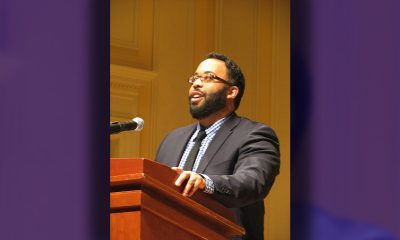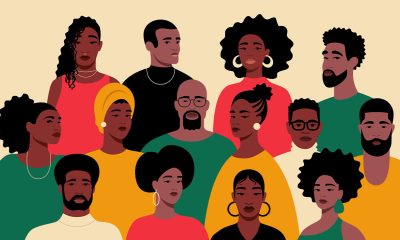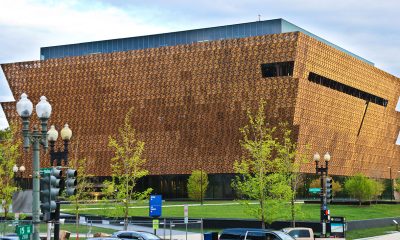Education
Legislature to Gov. Newsom: Make Ethnic Studies a High School Graduation Pre-Requisite
Sponsored by Assemblymember Jose Medina (D-Riverside), AB 101 requires all public school districts and charter schools serving students in grades 9 through 12 to offer culturally responsive curricula reflective of California’s diverse population.

For the second time since he became governor, Gavin Newsom is being asked by the California Legislature to sign a bill that would make ethnic studies a California high school graduation requirement.
Days before the end of the 2021 Legislative session, by overwhelming margins, the State Assembly and Senate approved Assembly Bill (AB) 101. It would require high schools to offer ethnic studies courses beginning academic year 2025-26 and make completing a one-semester course a graduation requirement starting in the 2029-30 school year.
Sponsored by Assemblymember Jose Medina (D-Riverside), AB 101 requires all public school districts and charter schools serving students in grades 9 through 12 to offer culturally responsive curricula reflective of California’s diverse population.
The state has more than 1,000 public school districts enrolling 6.2 million students speaking more than 90 languages. More than three-quarters of California’s K-12 students are non-white: 55% Latino, 22% white, 12% Asian or Pacific Islander and 5% African American.
According to Medina, a former ethnic studies teacher, “California is one of the most diverse states in the country and we should celebrate that diversity by teaching a curriculum that is inclusive of all of our cultures and backgrounds. Ethnic Studies provide students an opportunity to learn about histories outside of the Euro-centric teachings most prominent in our schools. At a time when the national climate drives divisiveness and fear of otherness, Ethnic Studies can play a critical role in increasing awareness and understanding.”
Last year, Newsom, who has expressed support of ethnic studies, vetoed a similar bill, AB 331.
He expressed concerns about the content of the Ethnic Studies Model Curriculum that was being developed as a template to guide school districts as they created their own versions of the course. Newsom called the draft model curriculum “insufficiently balanced and inclusive and needed to be substantially amended.”
Initial reaction to the Department of Education (CDE) Instructional Quality Commission’s (IQC) Ethic Studies Model Curriculum was strongly negative. During two years of heated debates, it produced several versions of the curriculum and attracted nearly 100,000 public comments.
The drafts drew complaints from Jewish Americans and other ethnic and religious groups who said their American experiences were being ignored. Jewish Americans expressed concerns that the curriculum evoked anti-Semitic stereotypes and dwelled on the Israeli-Palestinian conflict. Others criticized the curriculum for taking a left-leaning and politically biased view of history. For example, it defined capitalism as a system of oppression.
Revisions to the model curriculum were made and it was adopted by the State Board of Education this past March. The 894-page curriculum with more than two dozen lesson plans is designed to teach students about the history, culture and struggles of four historically marginalized racial and ethnic groups: African Americans, Asian Americans, Latinos and Native Americans. The guidelines also include supplemental lessons on Jews, Armenians and Sikhs in response to public comments received.
School districts and charter schools are not required to adopt CDE’s model curriculum. AB 101 lets them pick the elements they like from the model curriculum— or choose none of them. They can develop ethnic studies courses on their own. The course must be approved by the governing board of the school district or the governing body of the charter school, and the courses must be approved as meeting the A–G requirements of the University of California and the California State University.
AB 101 is supported by State Superintendent of Public Instruction Tony Thurmond and a coalition of educators, students, and advocates across the state. Supporters include the California Teachers Association, the California State PTA, Hispanic Association of Colleges and Universities, California Association for Bilingual Education, and The Education Trust-West.
Over the weekend, at the California Association of African American Superintendents and Administrators (CAAASA) 2021 Annual Round-Up, Thurmond was applauded by the group when he said, “I hope you’ve heard the good news. AB 101, the bill to require ethnic studies as a graduation requirement has been passed and is on its way to the governor’s desk for signature.
“Our babies deserve to learn about the contributions of their ancestors. Our African American children, our Latino children, our Native American, Pacific Islander children, deserve to hear the positive contributions of their ancestors, who helped to make this a great state, and a great nation.”
Also unanimously supporting AB 101 are the five diversity caucuses of the California State Legislature: the Latino caucus, the Asian Pacific Islander caucus, the Black caucus, the Jewish caucus and the Native American caucus.
The statement from the California Legislative Black Caucus (CLBC) leaders chair Sen. Steven Bradford (D-Gardena) and vice-chair Sen. Sydney Kamlager (D-Los Angeles) reads, “As chair of the Legislative Black Caucus, I am proud to stand with Assembly member Medina in support of the amendments to AB 101, … it is critical that ethnic studies be immediately included as a graduation requirement to help reduce further racial bias and create understanding. History is often taught with oppression and racism in the periphery or sometimes erased altogether. It is imperative that all students leave our education system with a deeper understanding of the communities that make California and America culturally diverse and strong.”
As Newsom decides whether or not to sign AB 101, criticism of the bill persists.
The anti-Semitism watchdog AMCHA Initiative writes, “My organization is deeply concerned that classes taught using [the Ethnic Studies Model Curriculum] will become vehicles for highly controversial, one-sided and extremely coercive political advocacy and activism that will both subvert the educational mission of our schools and incite bigotry and harm against many students…, we believe it is irresponsible and unethical to pass a bill requiring students to take a course that has not been shown to improve students’ academic achievement, and is quite likely to incite strife and hatred.”
Republican legislator opposition can be summed up in a comment Sen. Melissa Melendez (R-Lake Elsinore) made recently. Debating AB 101, Melendez said that ethnic studies is rooted in “critical race theory,” a view that racism is ingrained in laws and government institutions.
Ahead of his recall election on September 14, Newsom will likely avoid signing any bills until after the election, fearing he could motivate critics to vote in favor of the recall.
He has until October 10 to sign the bill.
Bay Area
Five Years After COVID-19 Began, a Struggling Child Care Workforce Faces New Threats
Five years ago, as COVID-19 lockdowns and school closures began, most early educators continued to work in person, risking their own health and that of their families. “Early educators were called essential, but they weren’t provided with the personal protective equipment they needed to stay safe,” said CSCCE Executive Director Lea Austin. “There were no special shopping hours or ways for them to access safety materials in those early and scary months of the pandemic, leaving them to compete with other shoppers. One state even advised them to wear trash bags if they couldn’t find PPE.”
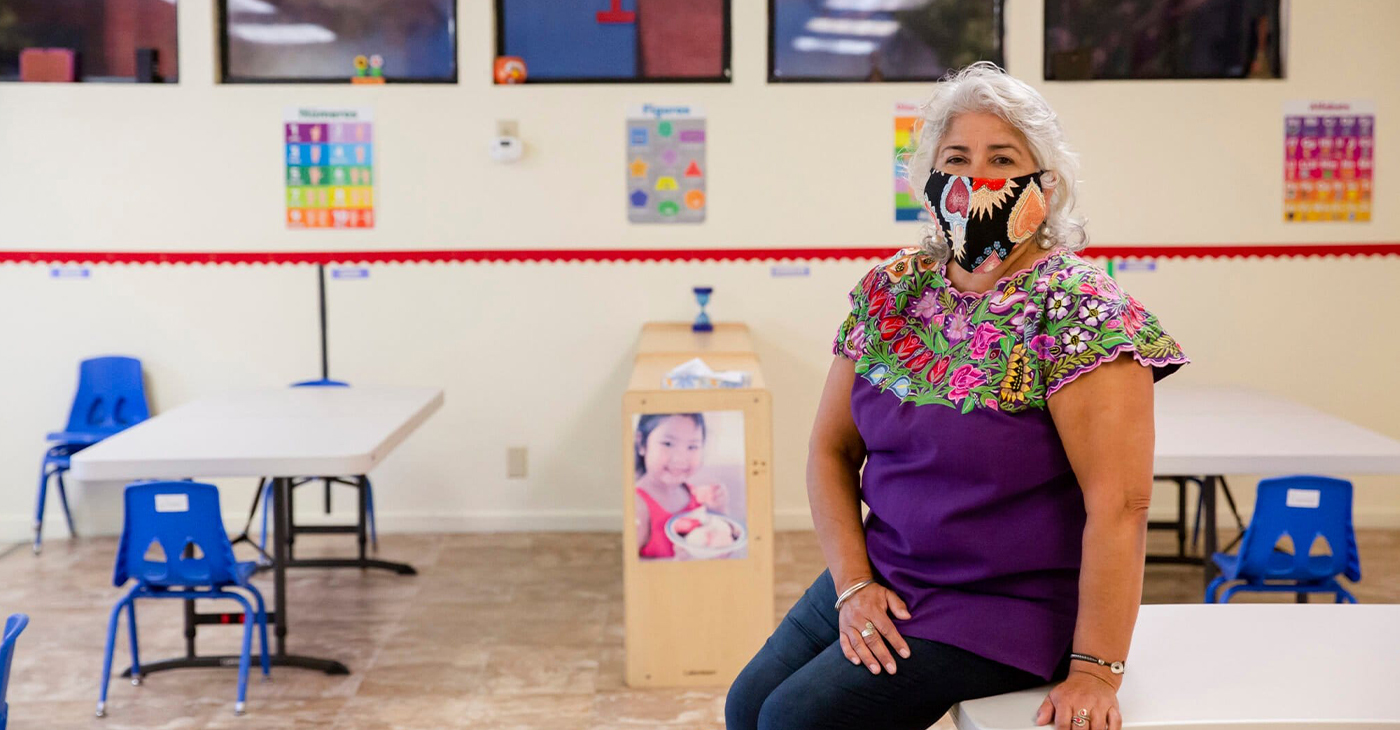
UC Berkeley News
In the first eight months of the COVID-19 pandemic alone, 166,000 childcare jobs were lost across the nation. Significant recovery didn’t begin until the advent of American Rescue Plan Act (ARPA) Child Care Stabilization funds in April 2021.
Today, child care employment is back to slightly above pre-pandemic levels, but job growth has remained sluggish at 1.4% since ARPA funding allocations ended in October 2023, according to analysis by the Center for the Study of Child Care Employment (CSCCE) at UC Berkeley. In the last six months, childcare employment has hovered around 1.1 million.
Yet more than two million American parents report job changes due to problems accessing child care. Why does the childcare sector continue to face a workforce crisis that has predated the pandemic? Inadequate compensation drives high turnover rates and workforce shortages that predate the pandemic. Early childhood educators are skilled professionals; many have more than 15 years of experience and a college degree, but their compensation does not reflect their expertise. The national median hourly wage is $13.07, and only a small proportion of early educators receive benefits.
And now a new round of challenges is about to hit childcare. The low wages paid in early care and education result in 43% of early educator families depending on at least one public support program, such as Medicaid or food stamps, both of which are threatened by potential federal funding cuts. Job numbers will likely fall as many early childhood educators need to find jobs with healthcare benefits or better pay.
In addition, one in five child care workers are immigrants, and executive orders driving deportation and ICE raids will further devastate the entire early care and education system. These stresses are part of the historical lack of respect the workforce faces, despite all they contribute to children, families, and the economy.
Five years ago, as COVID-19 lockdowns and school closures began, most early educators continued to work in person, risking their own health and that of their families. “Early educators were called essential, but they weren’t provided with the personal protective equipment they needed to stay safe,” said CSCCE Executive Director Lea Austin. “There were no special shopping hours or ways for them to access safety materials in those early and scary months of the pandemic, leaving them to compete with other shoppers. One state even advised them to wear trash bags if they couldn’t find PPE.”
The economic impact was equally dire. Even as many providers tried to remain open to ensure their financial security, the combination of higher costs to meet safety protocols and lower revenue from fewer children enrolled led to job losses, increased debt, and program closures.
Eventually, the federal government responded with historic short-term investments through ARPA, which stabilized childcare programs. These funds provided money to increase pay or provide financial relief to early educators to improve their income and well-being. The childcare sector began to slowly recover. Larger job gains were made in 2022 and 2023, and as of November 2023, national job numbers had slightly surpassed pre-pandemic levels, though state and metro areas continued to fluctuate.
Many states have continued to support the workforce after ARPA funding expired in late 2024. In Maine, a salary supplement initiative has provided monthly stipends of $240-$540 to educators working in licensed home- or center-based care, based on education and experience, making it one of the nation’s leaders in its support of early educators. Early educators say the program has enabled them to raise wages, which has improved staff retention. Yet now, Governor Janet Mills is considering cutting the stipend program in half.
“History shows that once an emergency is perceived to have passed, public funding that supports the early care and education workforce is pulled,” says Austin. “You can’t build a stable childcare workforce and system without consistent public investment and respect for all that early educators contribute.”
The Center for the Study of Childcare Employment is the source of this story.
Activism
District Delegates to State Democratic Party Central Committee Meeting Celebrate Election Victory
Delegates and elected officials were excited for the future of the Democratic Party and making its focus on 1) creating more affordable housing, 2) supporting education, 3) helping working families, and 4) protecting the environment and addressing climate change, with a focus on practical and realistic policy efforts that could have a meaningful impact.
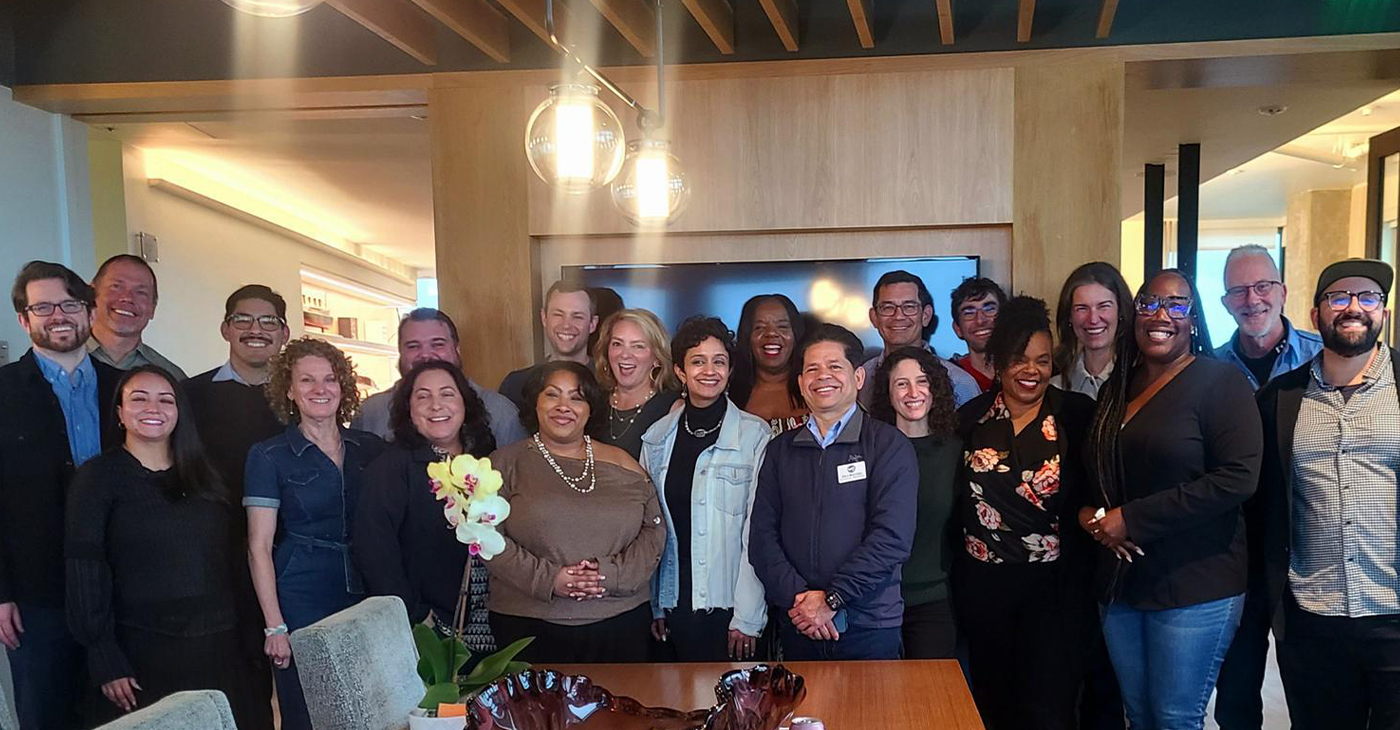
By Ben Gould
Special to The Post
Winners of the February 2025 Assembly District Election Meetings (ADEM) for Assembly Districts 14 and 18 met on Sunday, March 16 to discuss priorities for the California Democratic Party convention in Anaheim coming up in May.
The winners for Assembly District 18 are Genice Jacobs, Bobbi Lopez, Shawn Danino, Ben Gould, Zac Bowling, Nate Hanson, Cathy Adams, Sam Gould, Lauren Wilson, Ashlee Jemmott, and former Oakland School Board Director Sam Davis.
The winners for Assembly District 14 are: Sarah Bell, Neil Tsutsui, Hercules Councilmember Dilli Bhattarai, former Berkeley School Board Director Laura Babitt, former Piedmont Mayor Teddy Gray King, and former Albany Mayor Nick Pilch.
They were joined by Oakland Councilmember Janani Ramachandran, Emeryville Councilmember Courtney Welch, and BART Director Victor Flores to help celebrate their victory.
Delegates and elected officials were excited for the future of the Democratic Party and making its focus on 1) creating more affordable housing, 2) supporting education, 3) helping working families, and 4) protecting the environment and addressing climate change, with a focus on practical and realistic policy efforts that could have a meaningful impact.
Activism
Golden State Warriors Program Is Inspiring Next Generation of Female Engineers
Breaking down barriers and biases that deter young girls from pursuing STEAM subjects is essential for creating a level playing field and ensuring equal opportunities for all. By challenging stereotypes and promoting a culture of inclusivity and diversity in STEAM fields, experts believe young girls can be empowered to pursue their interests and aspirations without limitations confidently. Encouraging mentorship, providing access to resources, and celebrating girls’ achievements in STEAM are all crucial steps in creating a supportive environment that fosters success.
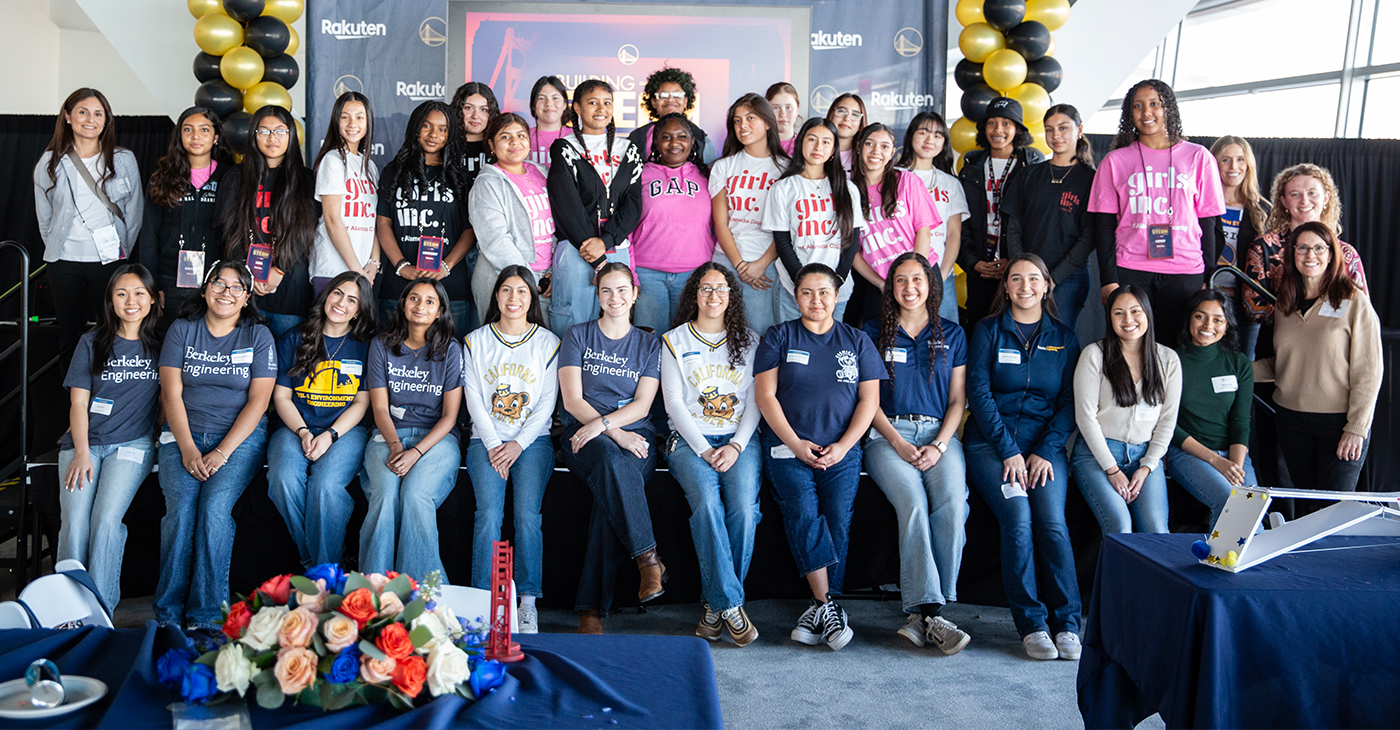
By Y’Anad Burrell
The Golden State Warriors and e-commerce giant Rakuten are joining forces to inspire the next generation of female engineers through Building STEAM Futures, part of The City Calls campaign.
Organizers say the initiative is founded on the idea that science, technology, engineering, arts, and mathematics (STEAM) are crucial fields for innovation and progress, and empowering young girls to pursue careers in these areas is more important than ever. Studies consistently show that girls are underrepresented in STEAM fields, resulting in a gender disparity that limits potential and hinders diversity.
Breaking down barriers and biases that deter young girls from pursuing STEAM subjects is essential for creating a level playing field and ensuring equal opportunities for all. By challenging stereotypes and promoting a culture of inclusivity and diversity in STEAM fields, experts believe young girls can be empowered to pursue their interests and aspirations without limitations confidently. Encouraging mentorship, providing access to resources, and celebrating girls’ achievements in STEAM are all crucial steps in creating a supportive environment that fosters success.
On Saturday, March 8, International Women’s Day, the Warriors and Rakuten hosted 20 middle school girls from Girls Inc. of Alameda County at Chase Center’s Above the Rim for a hands-on bridge-building experience. The young girls from Girls, Inc. of Alameda County had an opportunity to design, build and test their own bridge prototypes and learn the fundamentals of bridge construction from the Engineering Alliance and the UC Berkeley Steel Bridge Team.
This STEAM experience for the girls followed the first session in January, where they took a behind-the-scenes tour of the Golden Gate Bridge, learning about its design and construction from industry experts. The City Calls campaign, tipped off with the unveiling the Warriors’ new bridge-themed City Edition jerseys and court design earlier this year.
-

 Activism3 weeks ago
Activism3 weeks agoWe Fought on Opposite Sides of the Sheng Thao Recall. Here’s Why We’re Uniting Behind Barbara Lee for Oakland Mayor
-

 Activism4 weeks ago
Activism4 weeks agoSan Francisco Is Investing Millions to Address Food Insecurity. Is Oakland Doing the Same?
-

 #NNPA BlackPress3 weeks ago
#NNPA BlackPress3 weeks agoRev. Dr. Jamal Bryant’s Black Church Target Boycott Mobilizes 150,000
-
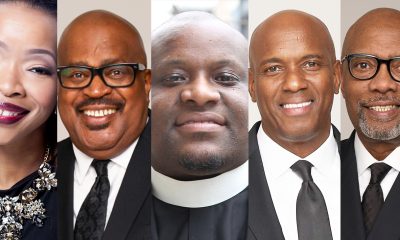
 Activism3 weeks ago
Activism3 weeks agoFaith Leaders Back Barbara Lee for Mayor, Criticize Candidate Loren Taylor for Dishonest Campaigning
-

 Activism4 weeks ago
Activism4 weeks agoOakland Post: Week of March 12 – 18, 2025
-

 #NNPA BlackPress3 weeks ago
#NNPA BlackPress3 weeks agoRecently Approved Budget Plan Favors Wealthy, Slashes Aid to Low-Income Americans
-

 Activism3 weeks ago
Activism3 weeks agoGroup Takes First Steps to Recall District Attorney Diana Becton
-

 Activism2 weeks ago
Activism2 weeks agoOakland’s Most Vulnerable Neighborhoods Are Struggling to Eat and Stay Healthy





